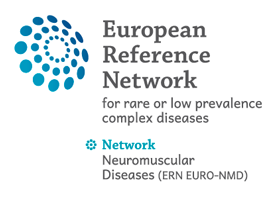27 Jul 2015
Evidence-based guideline summary: Evaluation, diagnosis, and management of facioscapulohumeral muscular dystrophy
Authors:
Rabi Tawil, John T. Kissel, Chad Heatwole, Shree Pandya, Gary Gronseth, Michael Benatar
Objective: To develop recommendations for the evaluation, diagnosis, prognostication, and treatment of facioscapulohumeral muscular dystrophy (FSHD) from a systematic review and analysis of the evidence.
Methods: Relevant articles were analyzed in accordance with the American Academy of Neurology classification of evidence schemes for diagnostic, prognostic, and treatment studies. Recommendations were linked to the strength of the evidence and other factors.
Results and recommendations: Available genetic testing for FSHD type 1 is highly sensitive and specific. Although respiratory insufficiency occurs rarely in FSHD, patients with severe FSHD should have routine pulmonary function testing. Routine cardiac screening is not necessary in patients with FSHD without cardiac symptoms. Symptomatic retinal vascular disease is very rare in FSHD. Exudative retinopathy, however, is potentially preventable, and patients with large deletions should be screened through dilated indirect ophthalmoscopy. The prevalence of clinically relevant hearing loss is not clear. In clinical practice, patients with childhood-onset FSHD may have significant hearing loss. Because undetected hearing loss may impair language development, screening through audiometry is recommended for such patients. Musculoskeletal pain is common in FSHD and treating physicians should routinely inquire about pain. There is at present no effective pharmacologic intervention in FSHD. Available studies suggest that scapular fixation is safe and effective. Surgical scapular fixation might be cautiously offered to selected patients. Aerobic exercise in FSHD appears to be safe and potentially beneficial. On the basis of the evidence, patients with FSHD might be encouraged to engage in low-intensity aerobic exercises

